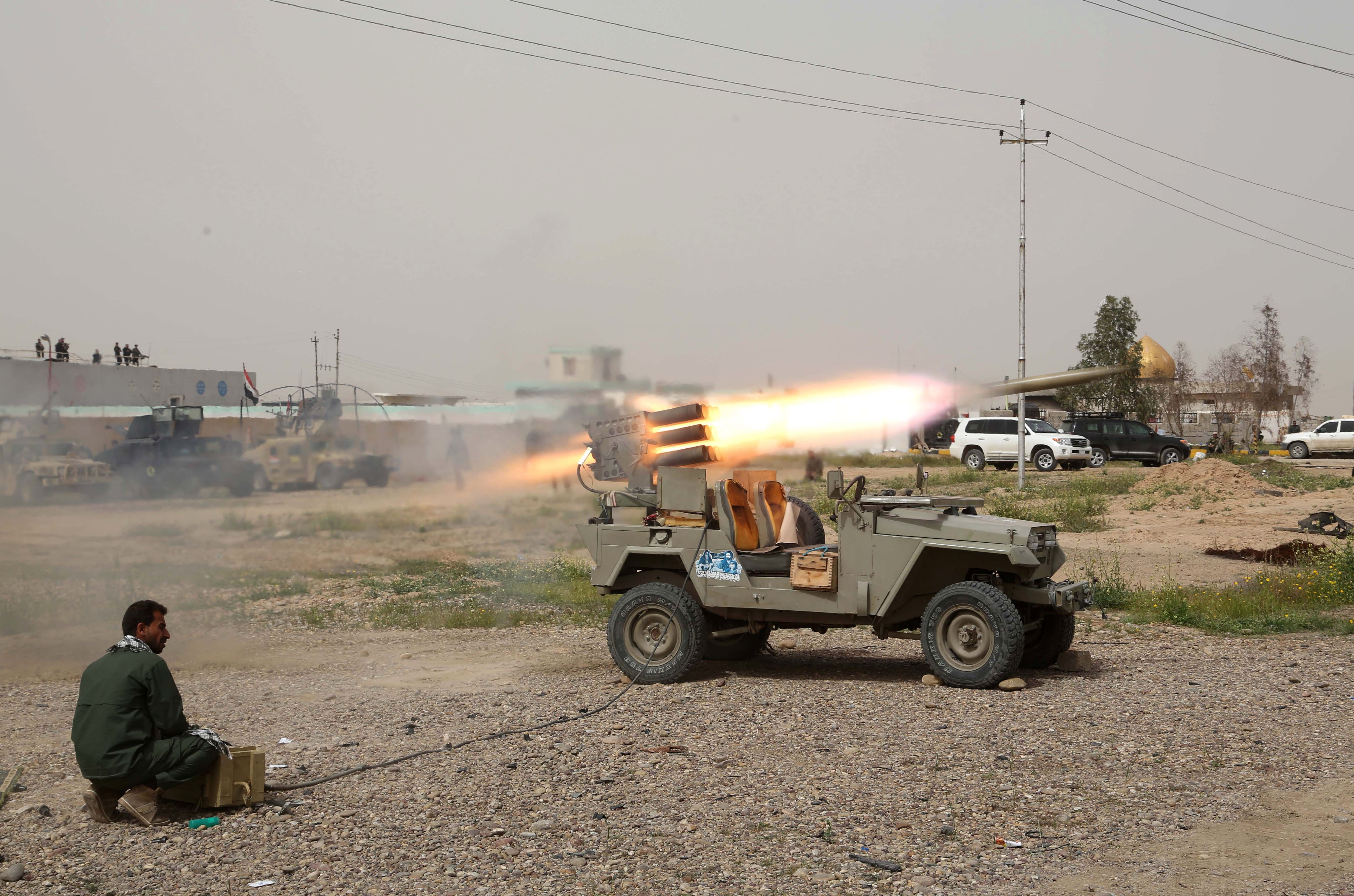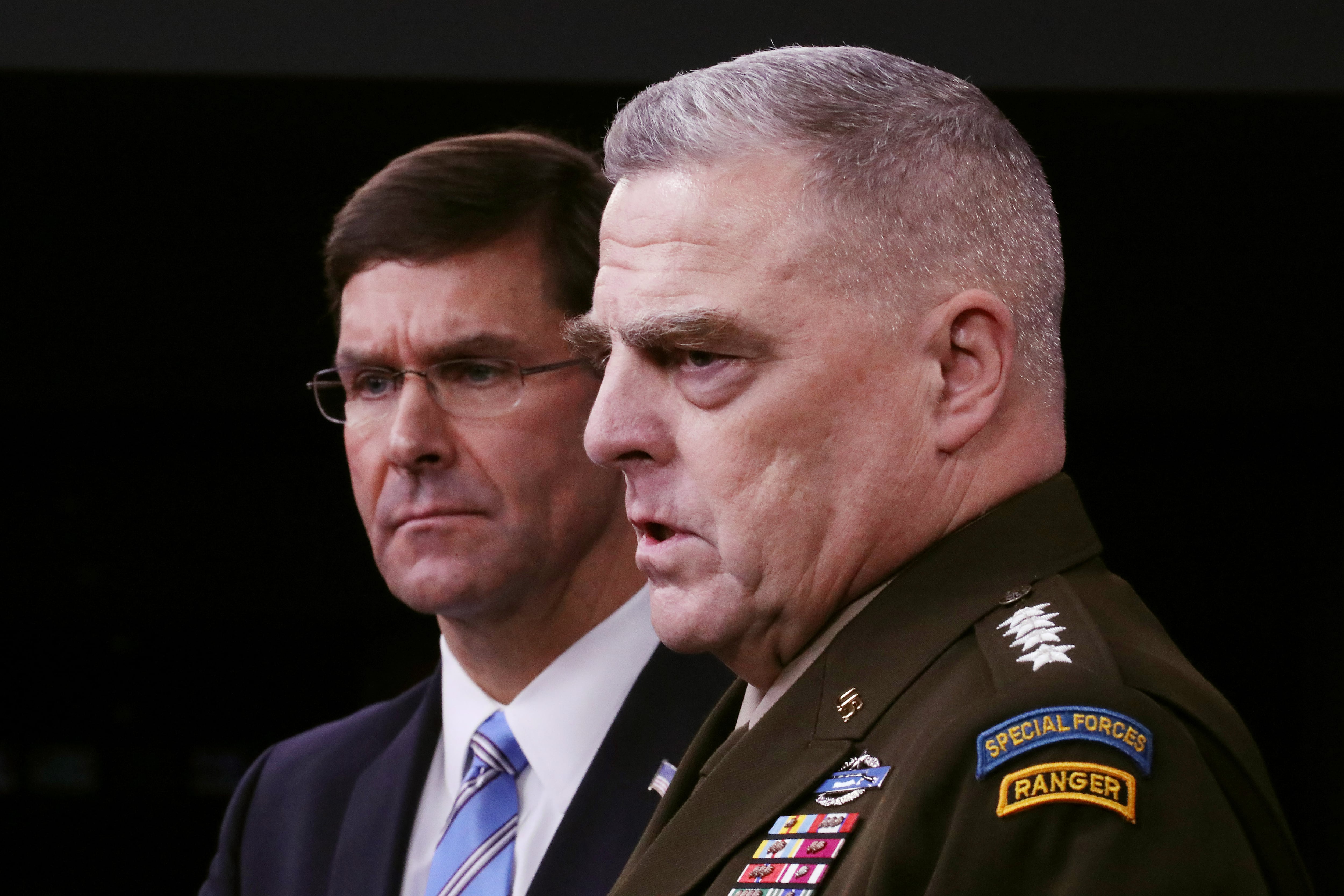Former Secretary of Defense Jim Mattis said Friday that Iran should be met with “some sort of retaliation” for taking a U.S. aircraft out of the sky.
Mattis did not elaborate what that retaliation would entail while responding to a question from the Washington Post’s David Ignatius about whether America’s policy of restraint was hurting efforts to deter Iranian aggression in the region.
Mattis visited the Washington Post Friday to discuss his new book “Call Sign Chaos” and current global events.
Iran shot down a U.S. RQ-4 Global Hawk drone on June 20 over the Strait of Hormuz. In July, U.S. defense officials said Marines aboard the Wasp-class amphibious assault ship operating an electronic warfare jammer downed an Iranian drone that threatened the ship.
Some analysts and national security experts criticized President Donald Trump for pulling back potential retaliatory strikes for the downing of the American drone.
Trump argued in a series of tweets that taking lives over an unmanned aircraft was not a proportionate response.
“On Monday they shot down an unmanned drone flying in International Waters. We were cocked & loaded to retaliate last night on 3 different sights when I asked, how many will die. 150 people, sir, was the answer from a General. 10 minutes before the strike I stopped it, not proportionate to shooting down an unmanned drone,” Trump tweeted June 21.
RELATED

Mattis explained Friday that the decision to retaliate is not an easy choice to make.
“Once you enter into this, you’re entering into a fundamental unpredictable phenomenon. It is war, or a war like act," Mattis said.
Following the shoot down of a U.S drone in 2011, Mattis (then head of U.S. Central Command) wanted a strong, direct response to the Iranian military.
“I proposed to Washington that we launch another drone on the same track, position a few F-18 aircraft out of sight, and shoot down the Iranian aircraft if it attacked the drone,” he wrote in his new book “Call Sign Chaos.” “The White House refused to grant permission.”
Mattis was ultimately relieved from that post in part because of his aggressive stance towards Iran, in contrast with Obama administration policies.
Lawmakers on Capitol Hill Wednesday pressed Secretary of Defense Mark Esper and Army Gen. Mark Milley, the Joint Chiefs chairman, regarding fears that Iran may see America’s restraint as a sign of weakness.
There have been nearly 10 rocket attacks against U.S. installations and interests across Iraq over the last several weeks. A U.S. official told Military Times that several of those attacks were carried out by Iran-backed militias.
And in September, U.S. officials blamed Iran for the attack on two Saudi Arabian oil fields.
“Iran should not mistake the United States’ restraint for an unwillingness to respond with decisive military force should our forces or interests be attacked," Esper told lawmakers Wednesday on Capitol Hill.
Milley told lawmakers that Iran should be “very very cautious” with how it proceeds.
“We are in a period of heightened risk with respect to Iran,” Milley said Wednesday. But the top American commander explained that “restraint in this particular situation is an appropriate response.”
“The ball is in the Iranian court," Milley said. How they respond and the size and scope of that response will determine a U.S. answer, he explained to lawmakers.
Mattis said Friday that the U.S. is “up against a revolutionary regime” that’s been killing it’s own people in the streets. Iran erupted into violent protests several weeks ago following a spike in gas prices.
Brian Hook, the U.S. special representative for Iran, told reporters Dec. 5, that more than 1,000 civilians may have been killed during the Iranian protests.
“We know for certain it is many, many hundreds,” Hook said.
Mattis told the Washington Post Friday that while he was the commander of CENTCOM, Iran’s Islamic Revolutionary Guard Corps sent up a SU-25 Frogfoot to shoot down a U.S. drone.
The Iranian fighter, Mattis said, made three runs on it trying to shoot it out of the air.
“I didn’t like that very much,” he explained.
The Iranian fighter missed the drone on each pass.
“Says something about their accuracy that they missed all three times,” Mattis joked.
Ten days later, Mattis explained, the U.S. put the drone up with two Navy F/A-18s flying alongside it.
RELATED

“The Iranians decided not to come up and be brave that day,” Mattis said. “It was a “wise” decision “for their pilot’s retirement program.”
Mattis served as the CENTCOM commander from 2010 to 2013.
The U.S. has deployed nearly 14,000 additional troops to the Middle East over the last six months to respond to Iranian malign behavior.
Esper says the DoD may send additional troops to the region.
Leo Shane III, the deputy editor and reporter covering Congress, Veterans Affairs and the White House for Military Times contributed to this story.
Shawn Snow is the senior reporter for Marine Corps Times and a Marine Corps veteran.




